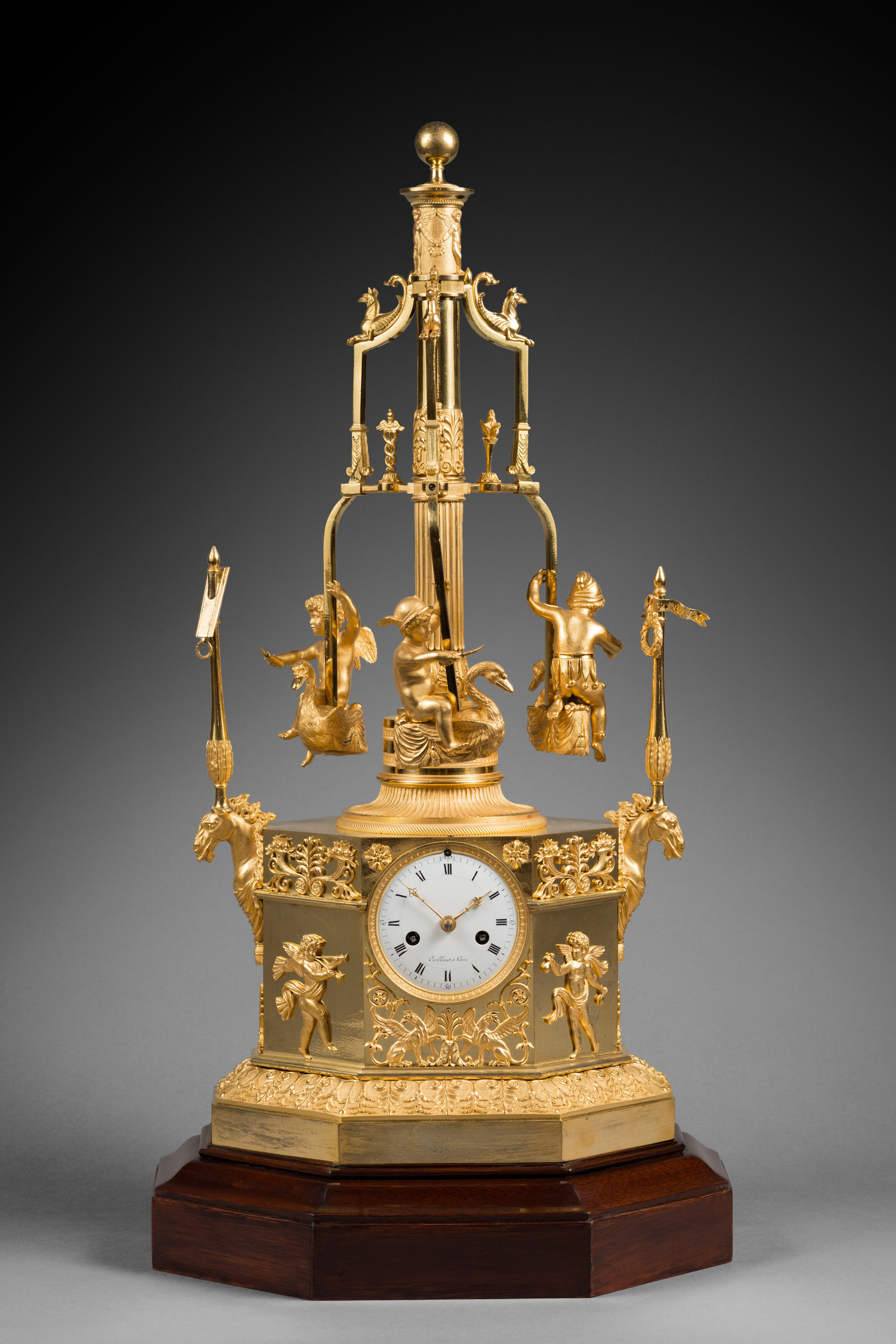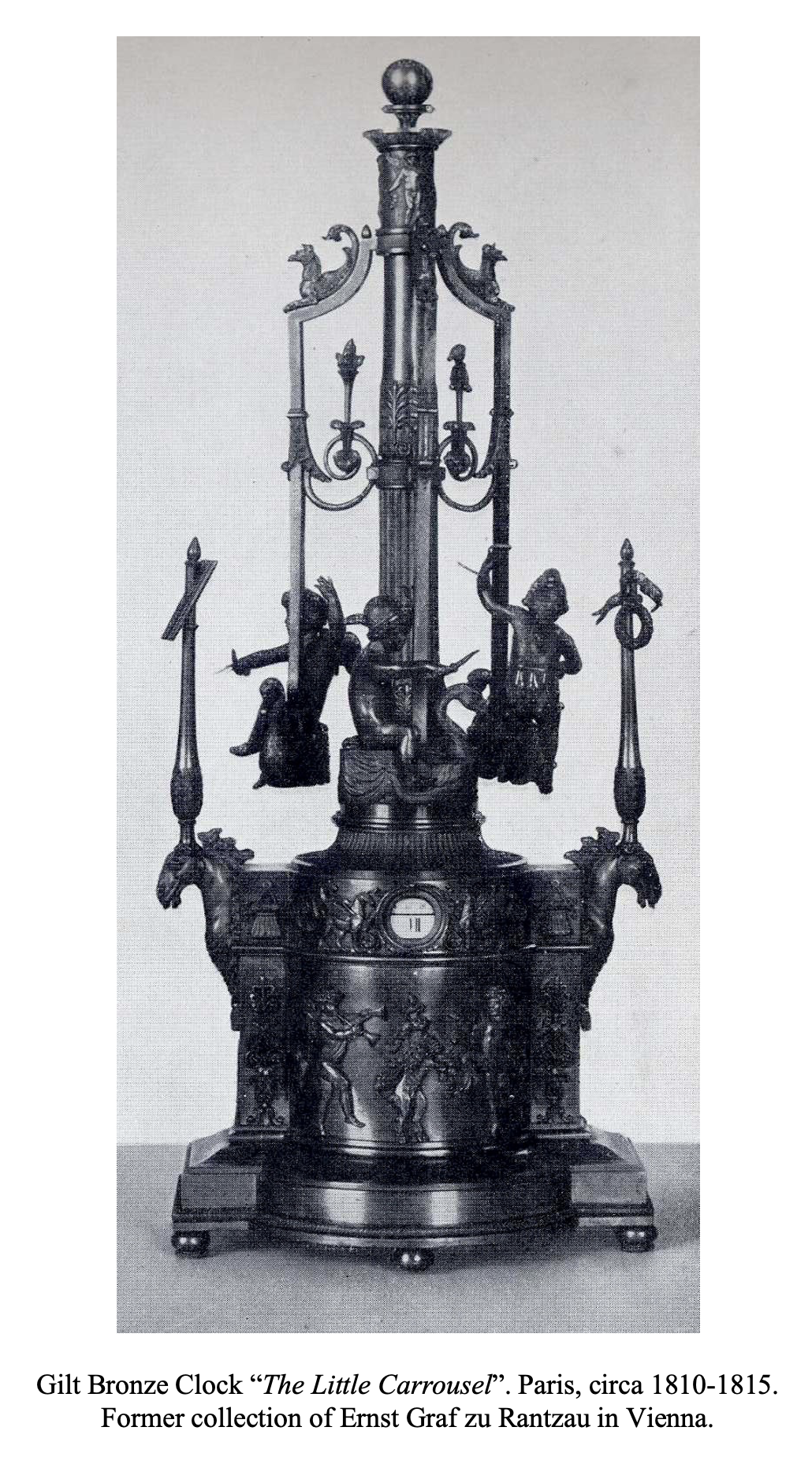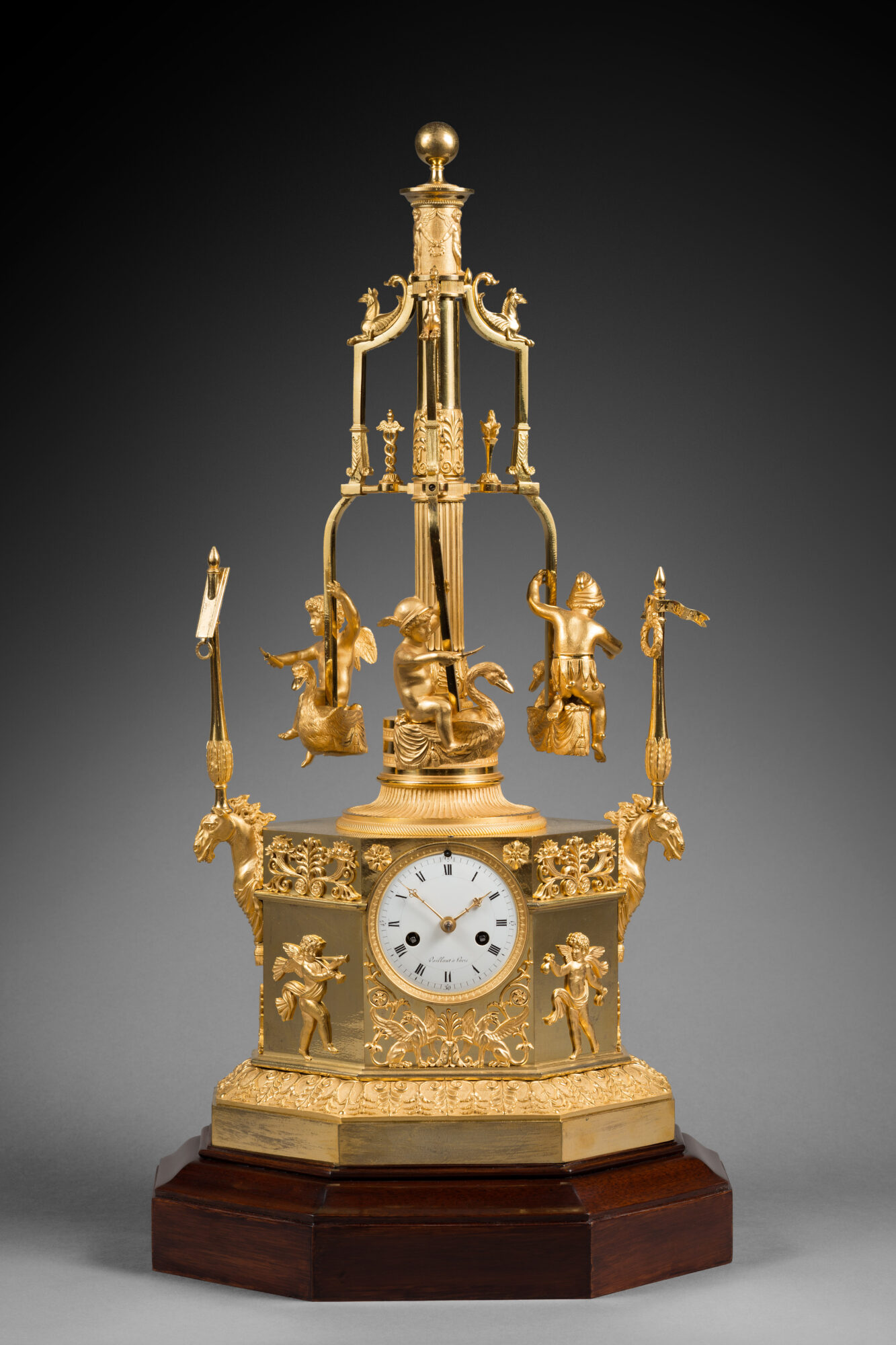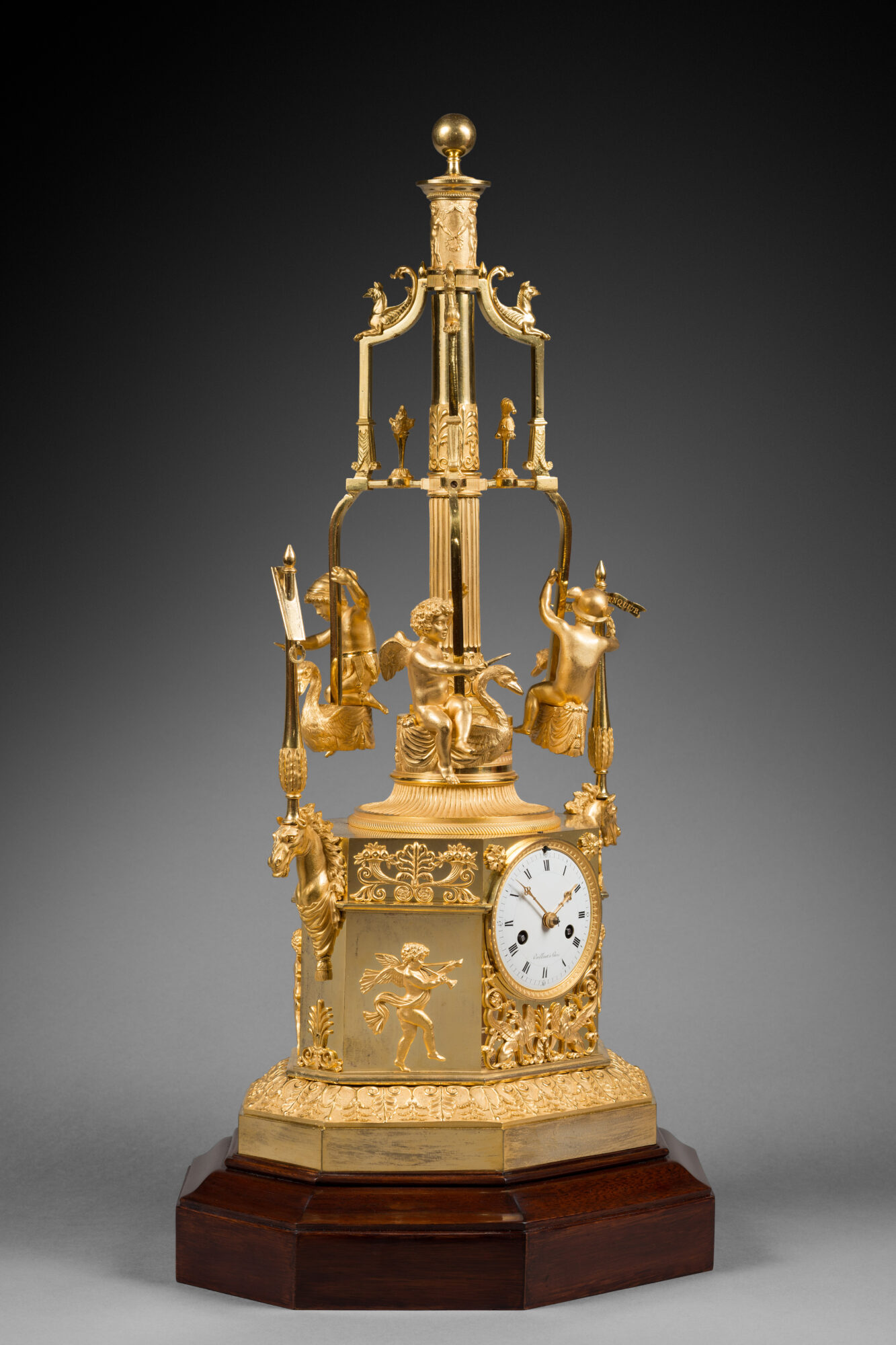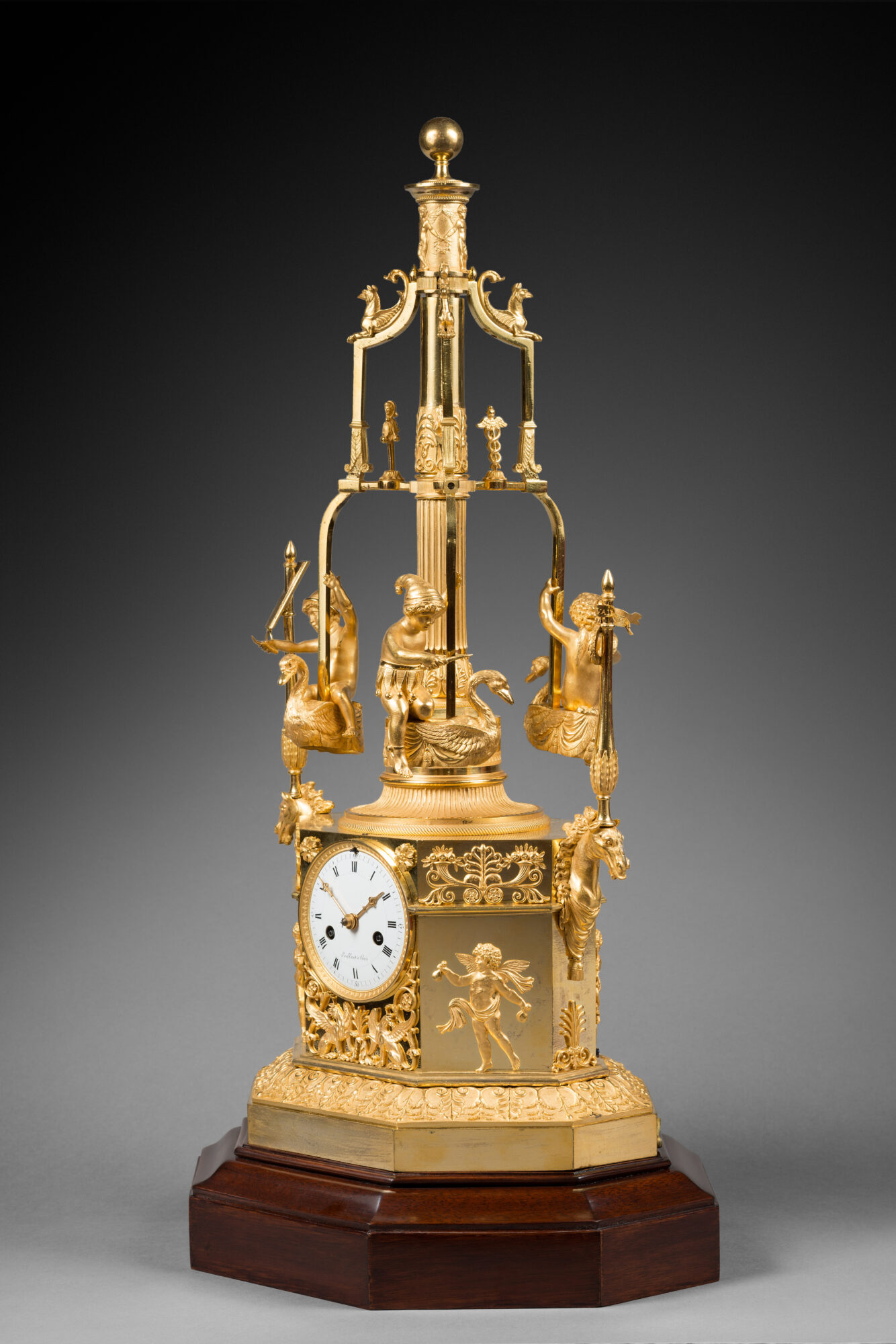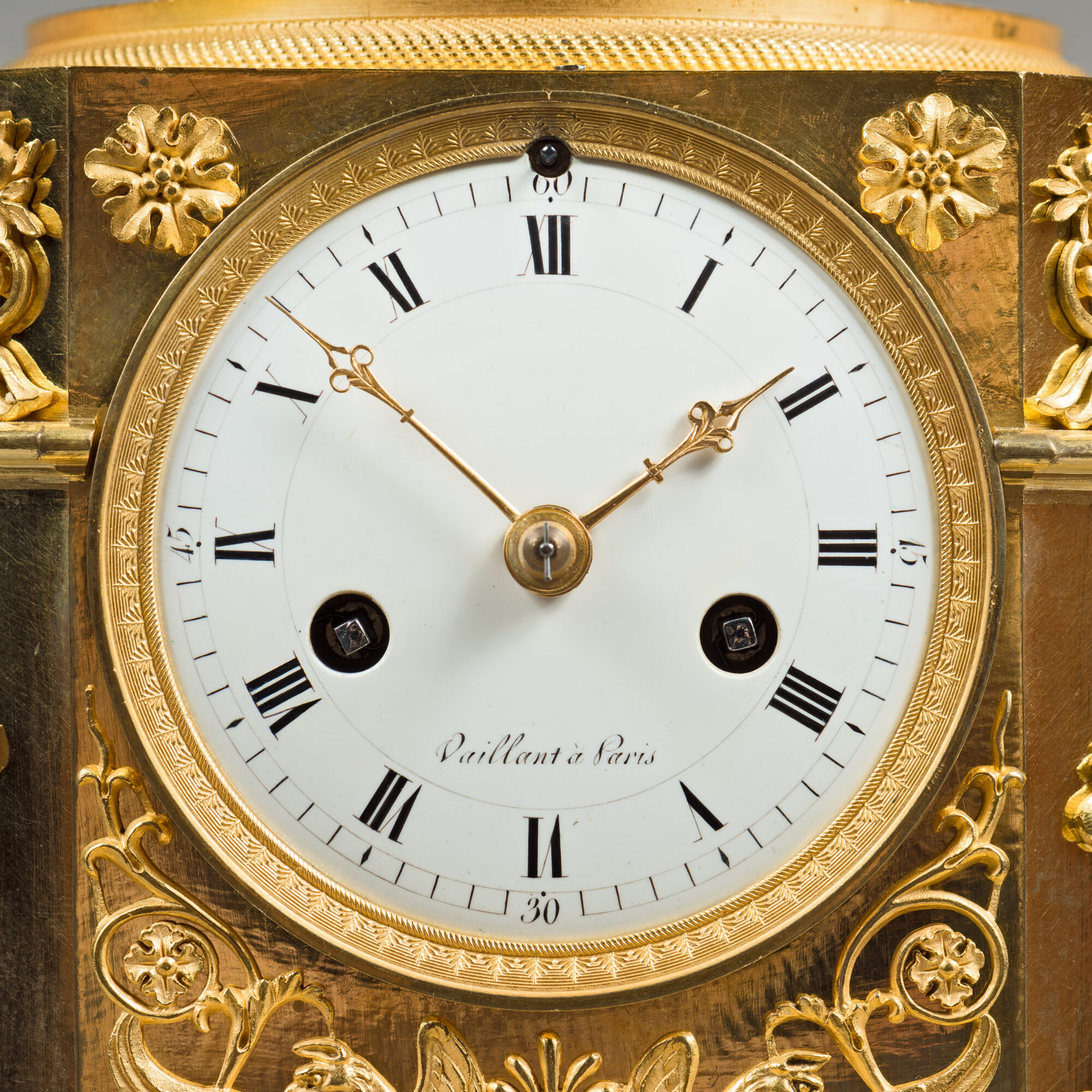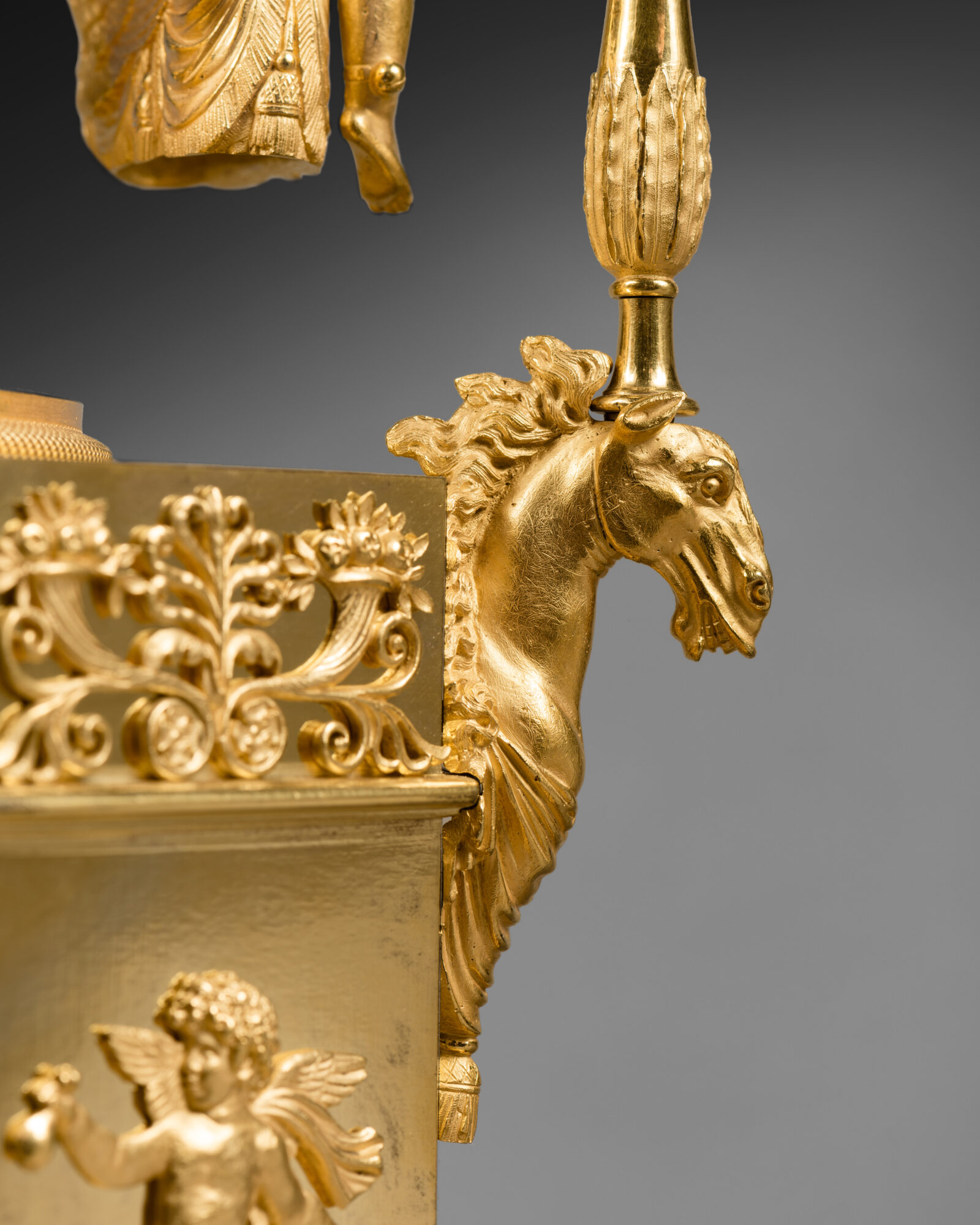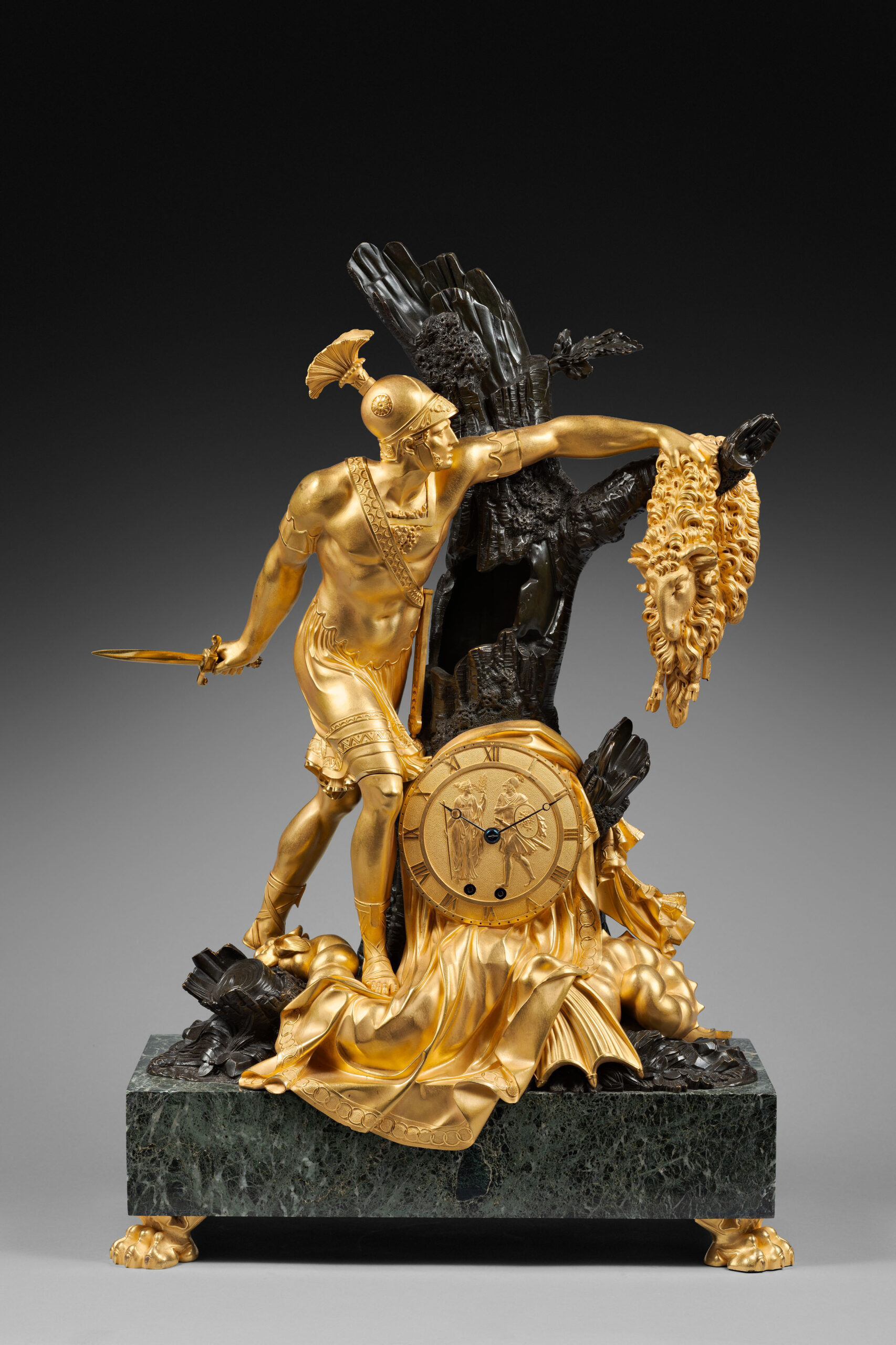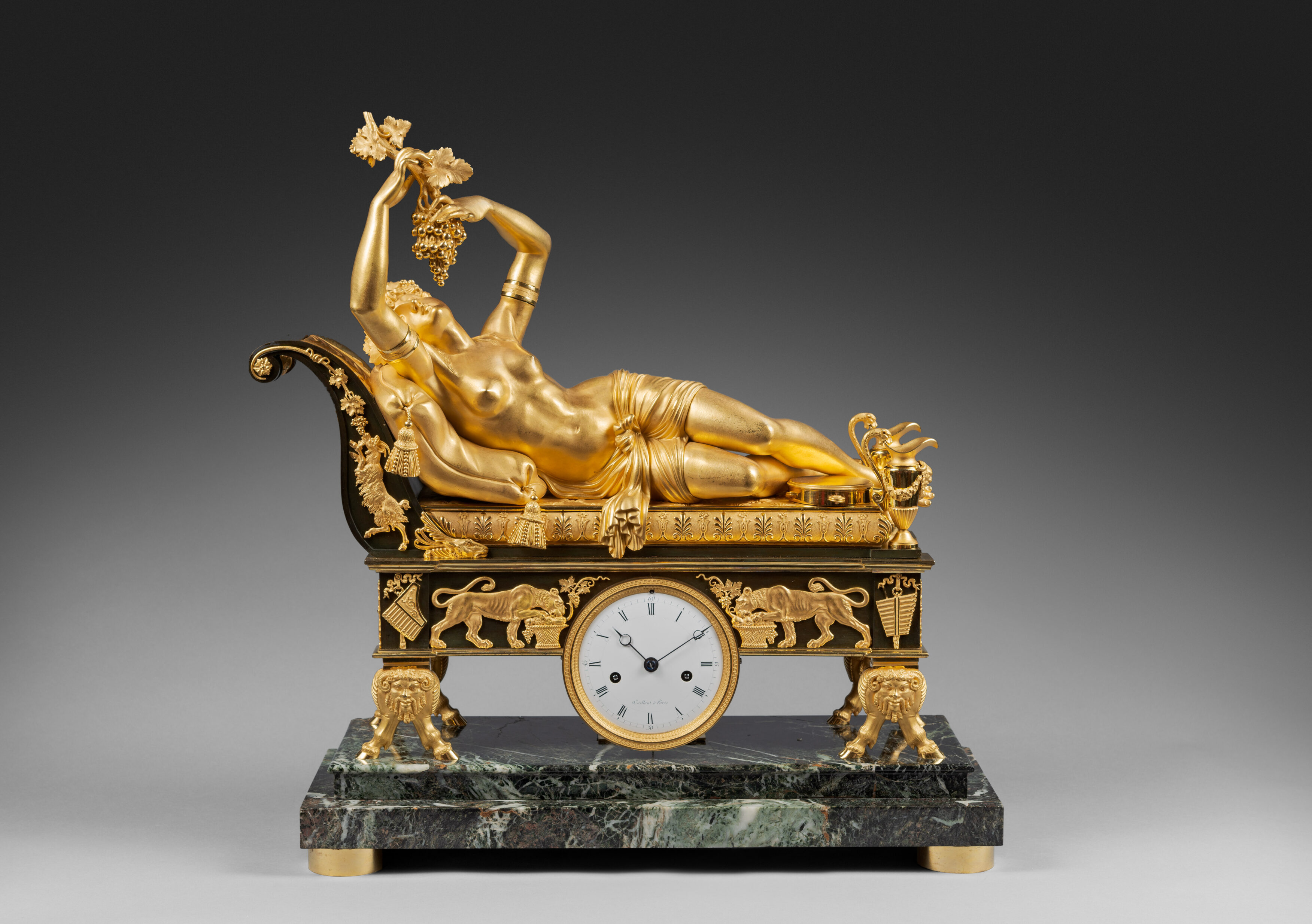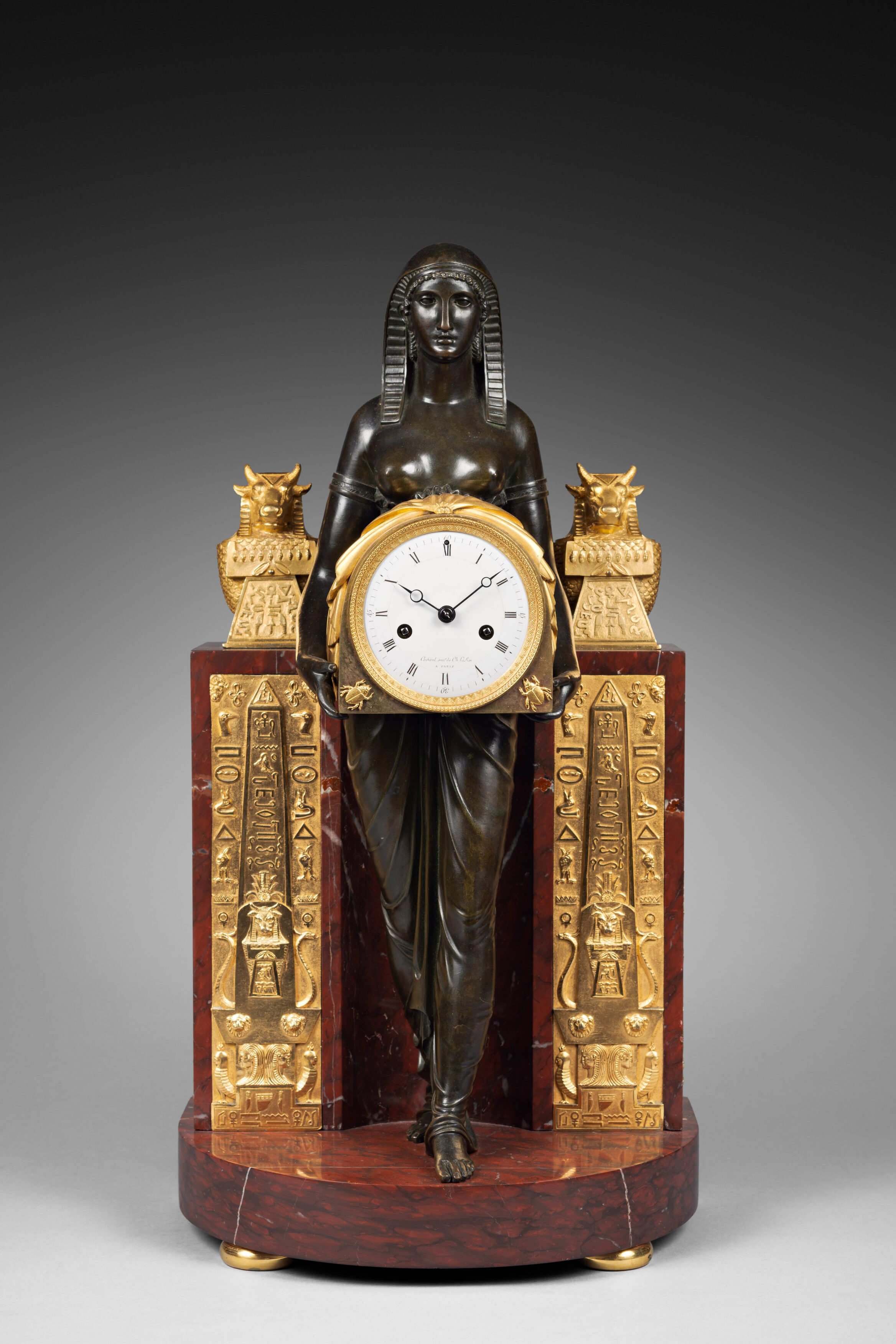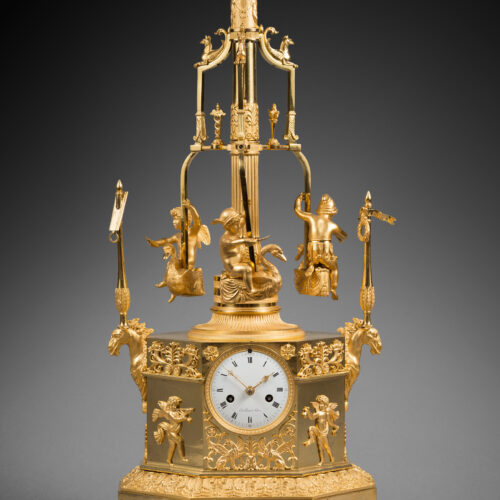Exceptional Matte and Burnished Gilt Bronze Automaton Clock
“The Little Carrousel” or “Memories of Childhood”
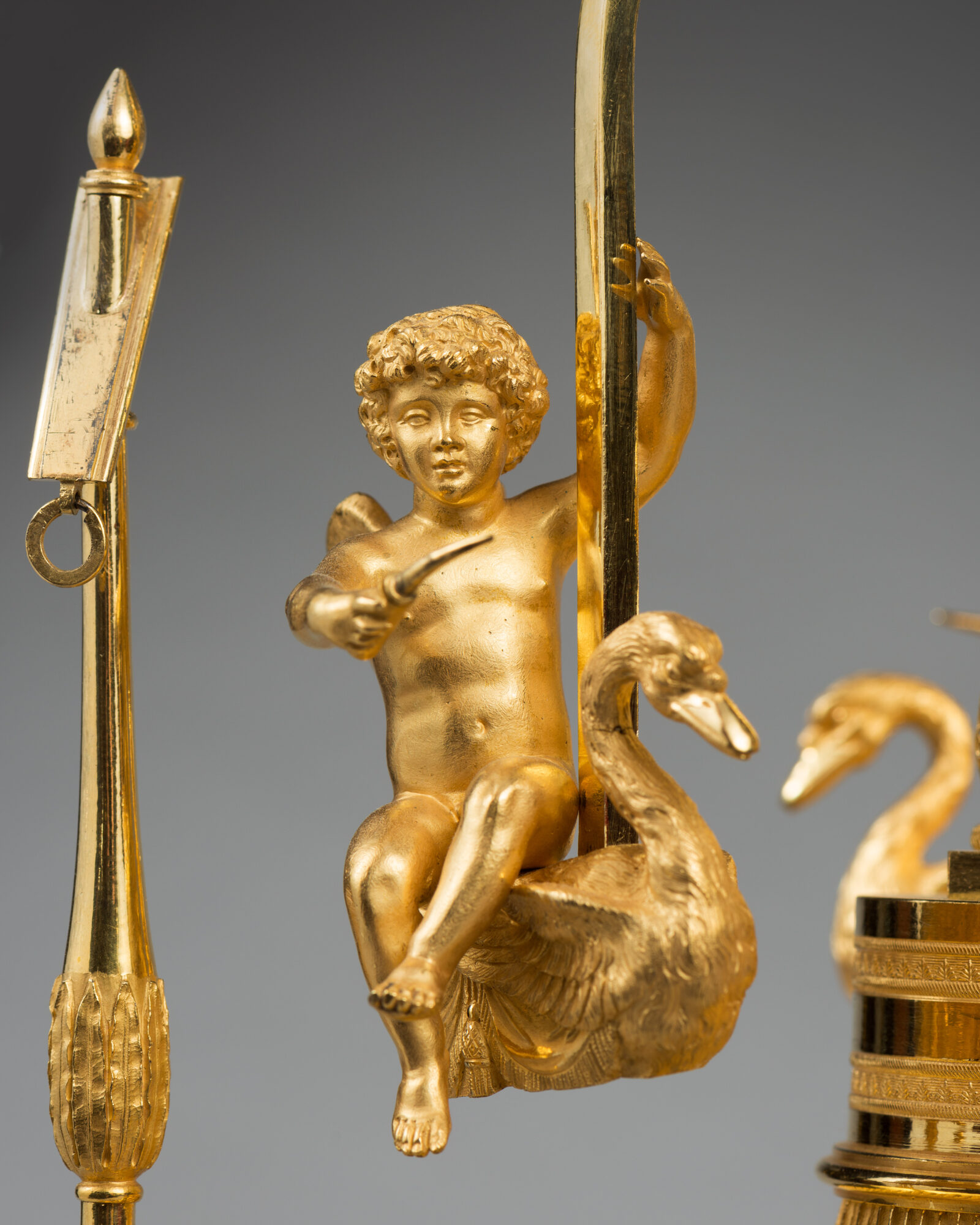
Dial signed “Vaillant à Paris“
Paris, Empire period, circa 1810-1815
The round white enamel dial, signed “Vaillant à Paris”, indicates the Roman numeral hours and the Arabic numeral fifteen-minute intervals, by means of two gilt bronze hands. It is fitted in a carrousel-form case that is made of finely chased gilt bronze with matte and burnished finishing. The movement is housed in an octagonal case that is elaborately decorated with applied motifs including cornucopia with scrolling and rosettes, putti musicians playing the trumpet and holding castanets, palmettes terminating in volutes and griffins facing each other. Two lateral horses’ heads support balusters adorned with stiff leaves. The upper portion, which rests upon a pedestal embellished with engine-turned friezes and fluting, is in the form of a carrousel. It features a central column that terminates in a ball, and is richly embellished as well. To it are attached three arms adorned with griffons and stylized foliage; these terminate in swans upon which are seated three children holding sticks, two of which are winged putti. The children are wearing bonnets or winged helmets. The carrousel is driven by a mechanism contained within the case, which is activated on the hour. The octagonal base is decorated with a frieze of alternating palmettes and stylized flowers.
Discover our entire collection of antique mantel clocks for sale online or at the gallery.
La Pendulerie is the specialist in fine and rare antique clocks, based in Paris.
The unusual design of the present automaton clock, and the exceptional quality of the gilding and chasing, suggest it was created by one of the finest and most talented Parisian bronze casters of the Empire period. The case relates particularly to the work of Thomire, Feuchère, Galle and Ravrio. Among the rare similar examples known today, one might cite a clock whose dial is signed “Vaillant”, today in the François Duesberg Museum in Mons (see Musée François Duesberg, Arts décoratifs 1775-1825, Brussels, 2004, p. 95). A second clock is shown in E. Niehüser, Die französische Bronzeuhr, Eine Typologie der figürlichen Darstellungen, Munich, 1997, p. 250, fig. 1055. A third example, made of chased patinated and gilt bronze, is illustrated in P. Kjellberg, Encyclopédie de la pendule française du Moyen Age au XXe siècle, Les éditions de l’Amateur, Paris, 1997, p. 447, fig. F. A fourth clock, whose base bears the inscription “Souvenir d’enfance”, is today in a private collection (illustrated in S. Chadenet, Les styles Empire et Restauration, Editions Baschet et Cie, Paris, p. 174). One further similar example with a cercles tournants dial was in the collection of Ernst Graf zu Rantzau in Vienna (sold Berlin, Baul and Graupe, 1931, lot 242).
Louis-Jacques Vaillant is one of the most important Parisian clockmakers of the Empire period. Probably a member of the family of Jacques-François Vaillant, another famous clockmaker, he almost certainly trained in the family workshop on the Quai des Augustins, becoming a maître on February 12, 1787. He soon encountered immediate success with influential Parisian collectors of luxury clockmaking. Tardy mentions his workshop as being in the rue de la Tixéranderie in 1800, and in the rue de la Verrerie from 1812 to 1817. At that time, certain of his clocks were mentioned as being in the collections of some of the most important collectors of the time, including those described in the probate inventories of personalities such as Viscount Charles-Marie-Philippe Huchet de la Bedoyère, Charles-Jean-François de Malon de Bercy and Alexandre-François, Count de La Rochefoucauld.
